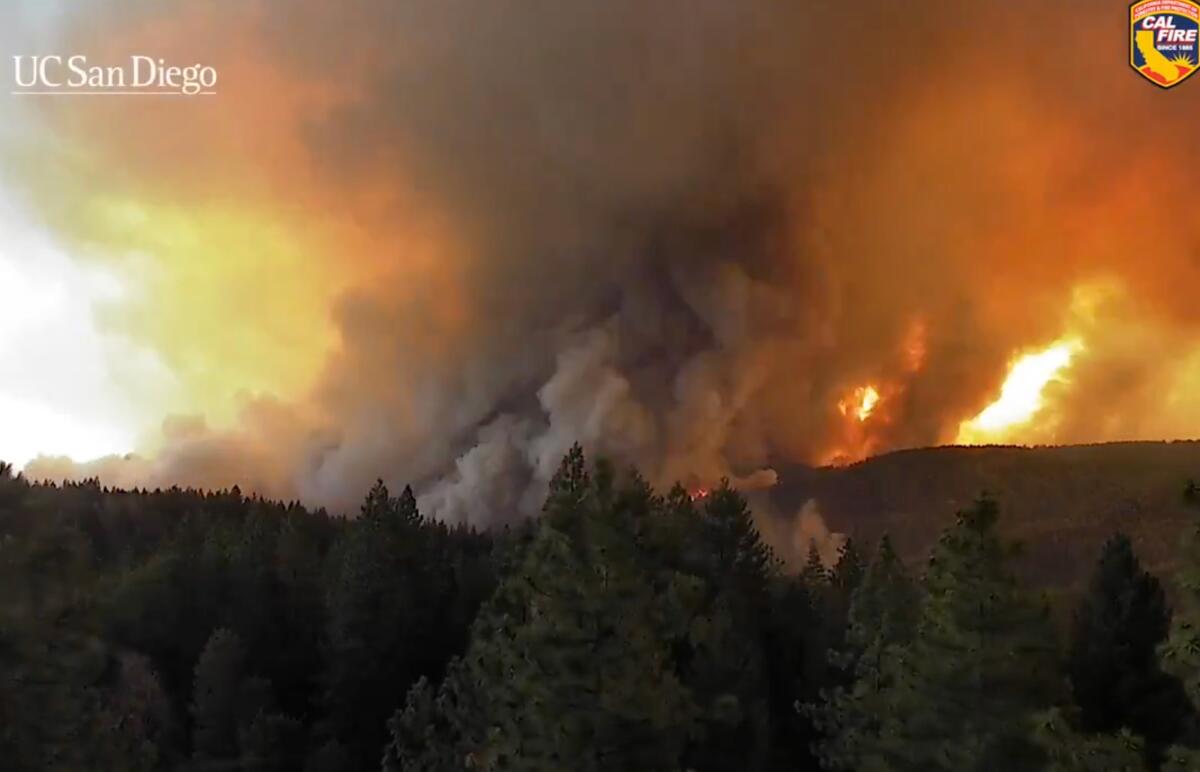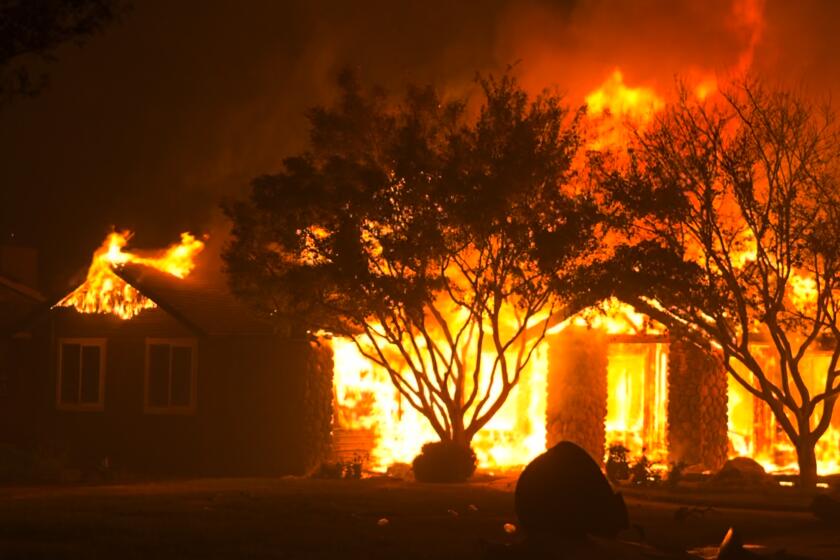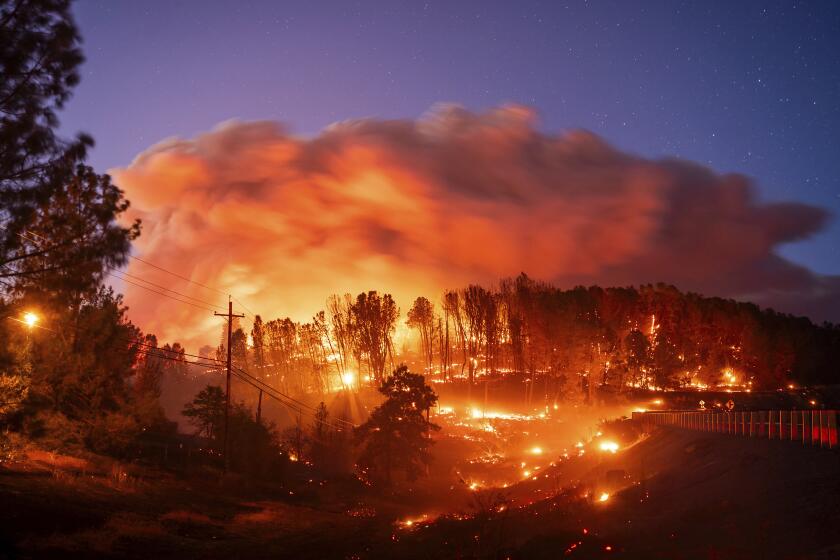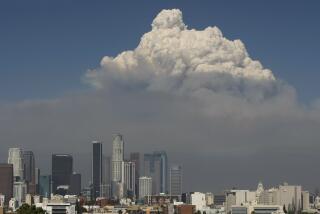‘Firenado’ swirls up from explosive Park fire north of Chico

- Share via
As the state’s largest wildfire of the year was doubling in size Thursday evening, explosive flames spun up into the atmosphere, swirling in a way that can only be described as tornado-like — a real life example of the “firenado” phenomenon.
Video of the massive fire whirl was captured by AlertCalifornia wildfire cameras, displaying the extreme fire behavior that is driving the massive and fast-moving Park fire across Butte and Tahoma counties.
The blaze has grown past 350,000 acres as of Saturday, forcing thousands of evacuations and burning more than 100 buildings. Officials say the fire started Wednesday in Chico due to an act of arson.
A wildfire burning northeast of Chico has swelled to more than 164,000 acres, sending thousands of residents fleeing in the night.
“At this point, the fire is kind of creating its own weather, and that can be pretty unpredictable,” said Courtney Carpenter, a meteorologist with the National Weather Service in Sacramento. “Really big, explosive wildfires can create thunderstorms. They can make whirling fire plumes that can mimic tornadoes.”
Meteorologists tracked those massive, rotating smoke plumes on the radar Thursday night, Carpenter said, a characteristic of “explosive fire growth.”
She said the wildfire also generated thunderstorm clouds, but didn’t quite trigger lightning, which some particularly unstable fires have created before.
Watching the fire produce massive smoke rotations — and maybe even several vortices — showed off the blaze’s rare and powerful nature, said Daniel Swain, a climate scientist at UCLA, on his YouTube channel. He said the Park fire had “super-cell thunderstorm-like characteristics.”
There is growing recognition that extreme wildfires can produce other dangerous phenomena that are not directly related to the flames alone, Swain said.
It’s not unusual to see fires modify their environment by causing localized wind currents, but large fires such as the Park fire can even start to “generate their own Mesoscale weather systems that look a lot like severe thunderstorms,” he said.
He added that new research is also finding that climate change is increasing the magnitude and frequency of such behavior, as well as bringing it to new regions.
The Park fire’s growth amid steady winds and hot temperatures has been dramatic. It is the seventh-largest wildfire in California history and still growing.
“There is evidence that these large and potentially dangerous pyro-cumulonimbus events are increasing in a warming climate as fire intensity increases,” he said.
Carpenter said the weather service doesn’t issue tornado warnings when fire whirls develop because residents in the area should already be evacuated. More than 4,000 people have been issued evacuation orders from communities in and around northeast Chico and in parts of southern Tehama County.
“We urge people to follow the local orders from local officials,” Carpenter said. “Keep an eye on things and be ready to go if you live in the vicinity of the fire.”
More to Read
Sign up for Essential California
The most important California stories and recommendations in your inbox every morning.
You may occasionally receive promotional content from the Los Angeles Times.












